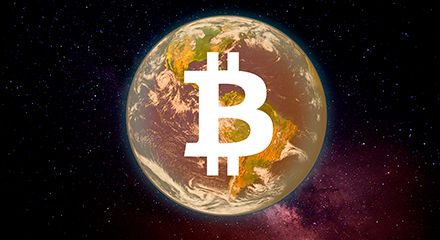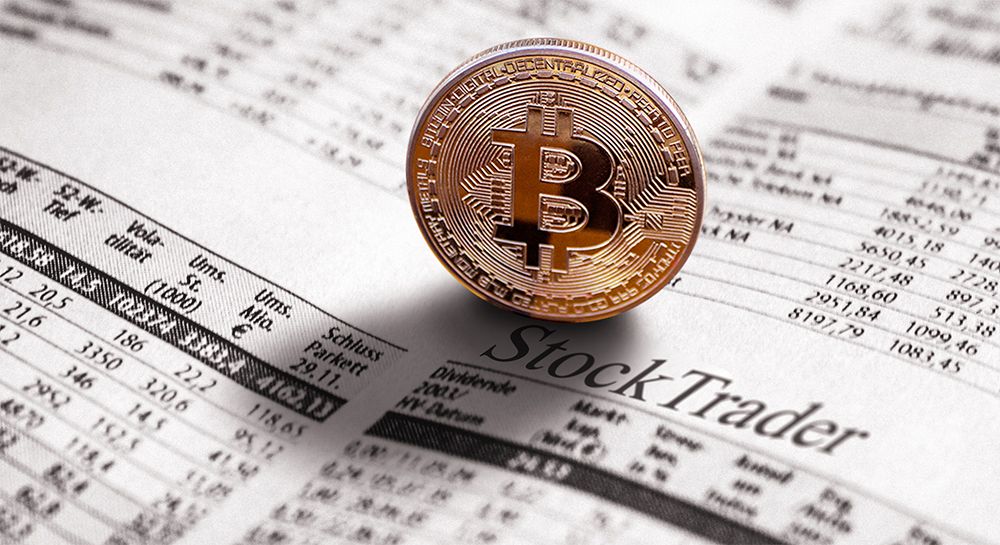Many people in the crypto sphere believe that the best case scenario is investing in the winning cryptocurrency that will serve as the one world currency. But is this the case? In this article, we will explore the future of cryptocurrency and how cryptos will even affect current world currencies.
Many people in the crypto sphere believe that the best case scenario is investing in the winning cryptocurrency that will serve as the one world currency. But is this the case? In this article, we will explore the future of cryptocurrency and how cryptos will even affect current world currencies.
Blockchain, the magic behind cryptocurrencies, serves as an immutable, secure, transparent, and public ledger of transactions.
Why do People See Bitcoin as a one world currency?
Naturally, many people believe that BitcoinBitcoin
The first blockchain-based cryptocurrency, launched in 2009. Bitcoin remains the most influential and widely recognized coin. All other cryptocurrencies are known as "altcoins," simply because they are not Bitcoin.
Decentralized
Distributed amongst its users rather than controlled by one group or within one certain area.
Fiat Backed Cryptocurrencies (centralized)
There are actually many economic reasons why various world currencies exist instead of one world currency. One reason is that a variety of currencies enables each country to control inflation independently, which can actually help restimulate individual economies in times of need. On the other hand, if every country used Bitcoin as their internal currency and relied solely on Bitcoin’s performance and miningMining
The process by which new coins are created as transactions on a network are verified.
Of course, these are situations that we want to avoid. The reality, however, is that people, politics, and laws governing corporations are imperfect and economic problems are inevitable. Given this, different countries have different economic cycles. This means that business growth, bank performance, and inflation adjustments experience different rates of change in different areas.
Source: Wall Street Survivor
Additionally, there is arguably a relationship between how much a country exports and the strength of its currency. Countries that depend heavily on exporting goods to other nations tend to have weaker currencies. As a result, these currencies are seen as cheaper and more competitive compared to their competition. In other words, weaker currencies allow countries to gain more market share by offering a more attractive, cheaper deal on their goods. When a country’s total exports increase, its currency may weaken. This is true for the US Dollar, which is arguably the closest thing to a one world currency that exists today; many countries accept USD as payment.
Another important thing to understand is that liquidity is critical to the success of currencies. In many ways, the currency with the most liquidity “wins.” When people ask, “what is the world currency?” people often answer that it is the US dollar because the US dollar is the most traded and liquid currency on Earth. For this reason, it is much more stable than many other currencies. This is also the reason many stores in other countries will accept USD. Now that we understand why a true one world currency does not and will not exist, let’s explore why countries will create fiat-backed cryptocurrencies - and why we should be excited about them.
Why would I want my country to make a cryptocurrency?
BlockchainBlockchain
A digital, distributed ledger which contains data for all the transactions that have ever taken place using a given cryptocurrency.

Here is a brief list of advantages that come with the transparency that cryptocurrencies make possible:
- We can personally calculate and track the rate of inflation, providing us not only with knowledge but the power to work more closely with the government. This would result in more economic power to individuals and potentially a more active, positive working relationship between citizens and their governments.
- If all governments use blockchains then all of our currencies would be more fungible, easily traded, and interoperable.
Fungibility
The idea that all units in a money supply are exactly equal. Fungibility is considered to be an essential aspect of effective currencies by many economists.
- A government using blockchain technology opens the doors for more utility. Perhaps, we can also use blockchains to vote on political elections as well as more financial-related decisions. Votes would then be transparent, mitigating concerns about duped or faked votes.
Now, we’ve covered, in my opinion, the most difficult piece of information to swallow - the reasons for multiple national currencies. Next, let’s dive into the decentralizedDecentralized
Distributed amongst its users rather than controlled by one group or within one certain area.
Decentralized Cryptocurrencies
Decentralized currencies enable many applications both technically and economically. When speculating on the future of cryptocurrency, decentralized networks are yet another reason against the one world currency argument.
Decentralized currencies give us:
- dApps. Ethereumis one example out of many cryptocurrencies which allow developers to launch decentralized applications (dApps
Ethereum
A cryptocurrency created by Vitalik Buterin that runs on Ether (ETH). Ethereum was the first blockchain-based technology to make smart contracts and decentralized applications possible.) on their blockchain-based networks. Rather than launching an application for Apples App Store, now we can launch global applications distributed over Ethereum, for anyone to access. These dApp platforms provide utility by globalizing business and introducing tokens specific to each application.dApps
Distributed Apps. Applications without centralized control. - Private currencies. Projects such as Monero, Dash, ZCash, PIVX, and others are competing to provide fiat-like currencies. Rather than being controlled by a government, these currencies are run by distributed networks, much like Bitcoin and all the altcoins.
- Crypto commodities. Many projects are launching digital assets which may represent physical assets such as gold and silver or fun, virtual collectibles like Cryptokitties. Collectible and valuable crypto assets are becoming increasingly popular.

There are other categories and use-cases for decentralized blockchains, but these three should provide a strong base for the utility of decentralized currencies. Amongst each category, there is lots of competition and there can be multiple winners.
There will be many popular dApps in addition to popular dApp platforms. Ethereum, Lisk, and NEO can all be long-lasting projects while competing, much like Apple and Microsoft. The same goes for privacy-oriented currencies, high-throughput focused currencies, and more. The world is large enough for multiple currencies to exist and it is even in our best interest - in case one network goes down or societies want to adopt specific currencies for economic reasons.
In my opinion, the future of cryptocurrency looks bright, with lambo opportunities available from many different investments.
How does the future of cryptocurrency look?
In my opinion, the future of cryptocurrency looks bright, with lambo opportunities available from many different investments. We cannot emphasize enough that there will not be one world currency. Many cryptocurrencies will exist and are prospering even now. Many hedge funds, family offices, venture capital firms, and technology firms are investing in blockchain-based projects. While this might fuel a bubble, the industry is here to stay.
Crypto is not a 10-year fad. I believe there is room for over one hundred blockchain companies to coexist, much like there are easily thousands of traditional technology companies thriving since the dot-com boom of the 1990s. As more investors and traders enter the market, the market will become more stable, competitive, and political, creating better quality products while carving a new niche in the technology industry.
How many cryptocurrencies will exist?
As we mentioned, the future of cryptocurrency seems bright with many winning opportunities. We expect there to be some amount of fiat-backed currencies plus well over one hundred (probably thousands) of decentralized projects coexisting. Currently, there are 180 recognized national currencies, so we can assume 180 currencies in addition to however many decentralized projects will prosper.

When will we see multiple cryptocurrencies take hold?
Cryptocurrencies are already taking hold. Arguably, the future of cryptocurrency is being created as we speak. Venezuela is creating the “Petro” - a government-issued cryptocurrency. If the Petro proves to be successful for stimulating the Venezuelan economy, then it is very possible that a snowball effect will occur where other countries issue their own cryptocurrencies, whether these cryptos represent national currencies or assets such as oil and gold. The Venezuelan Petro is backed by oil and mineral resources. This scenario could occur within the next 3-5 years, especially as the industry continues to prove itself.
For the decentralized networks that we follow, such as Ethereum and NEO, we would not be surprised to see these applications fix many foundational scalability issues within the next 2-3 years, which is when strong cryptocurrencies may really establish themselves. Once these blockchain networks can truly support global demand from a technical standpoint, mass adoption should be just around the corner. This could certainly happen within 2-3 years.
- Own a website? Link to this article!
- Willing to spread the love? Share it on social!



















